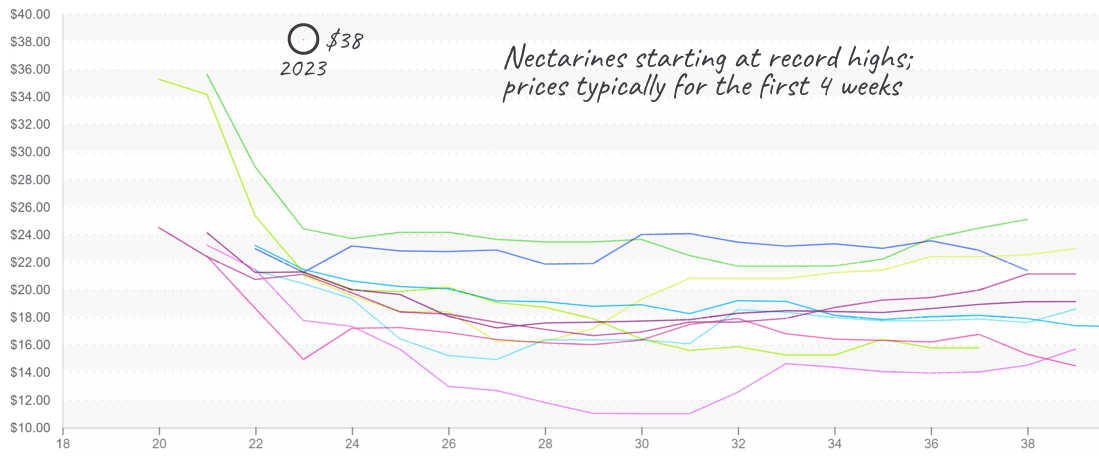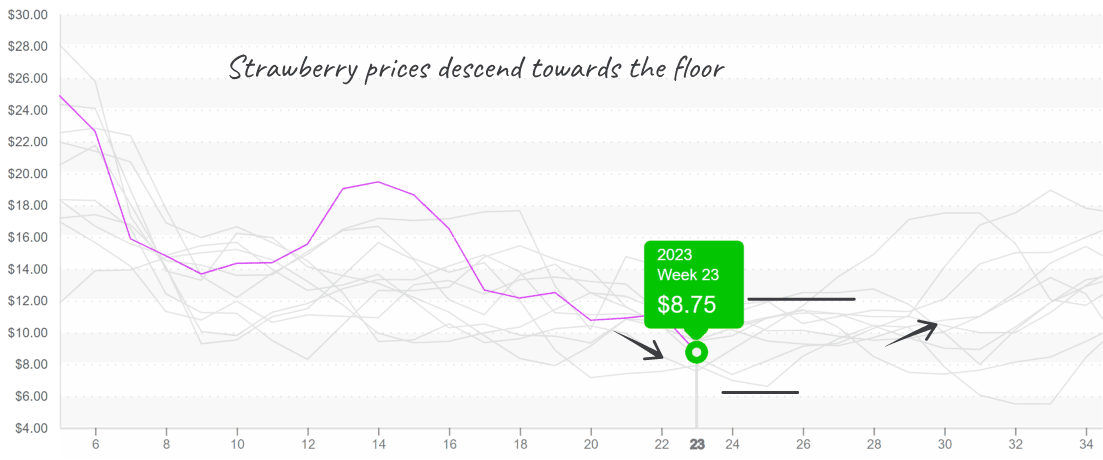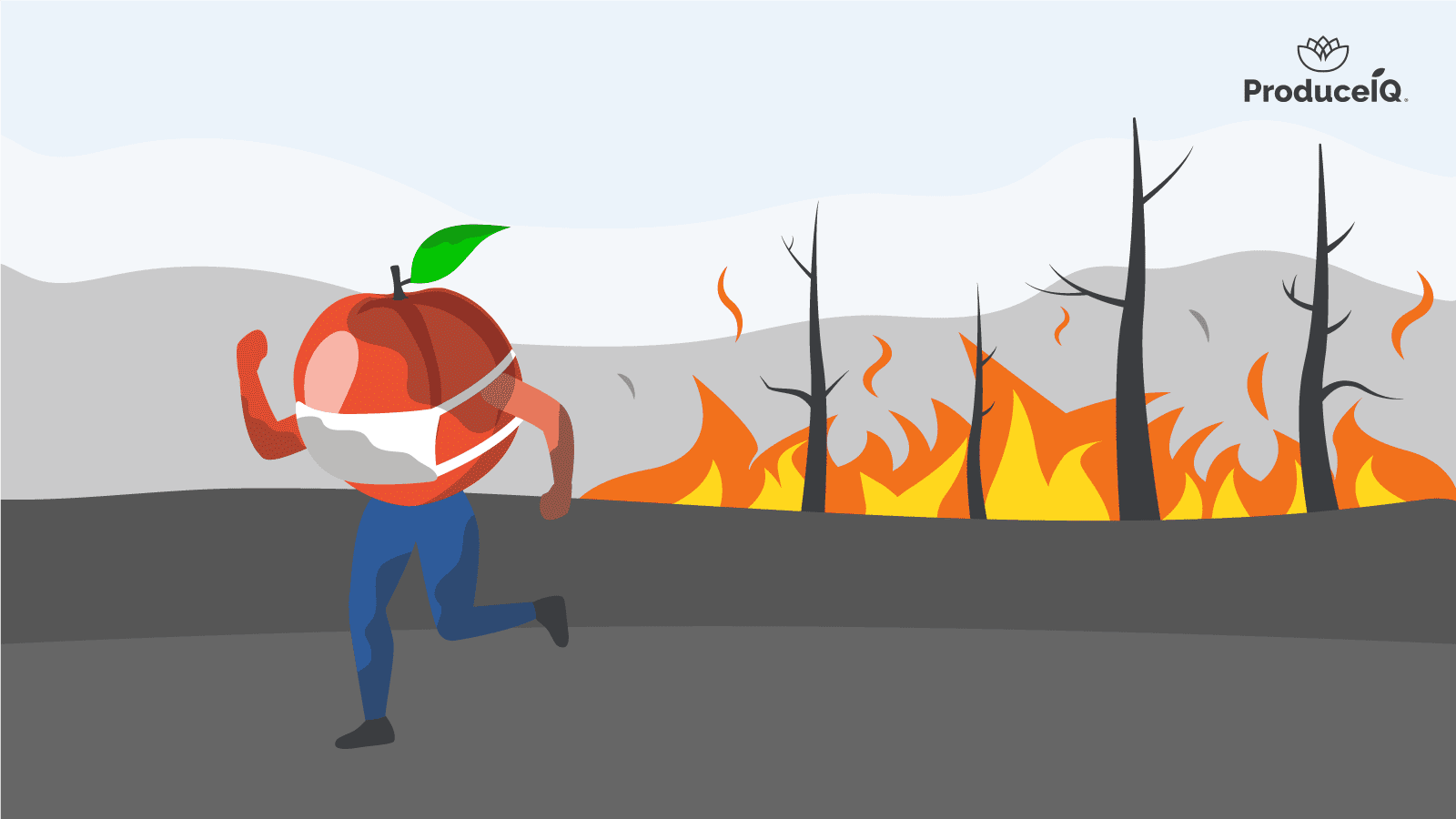Images of a blurred, scarlet New York City skyline dominated headlines last week. Due to strong Southbound winds, smoke from Canadian wildfires in Quebec billowed down the Eastern seaboard of the United States.
Canadian wildfire season begins in May, and it is already the third worst season in a decade. Multiple provinces in Canada have had the highest heat on record for May, and June doesn’t seem to be cooling off.
The intensity of this fire season is attributed to climate change and the beginning of an El Nino pattern in the Equatorial Pacific. In translation, persistent, abnormally hot, and dry weather are the ideal conditions for Canadian wildfires to proliferate unchecked.
This week, a low-pressure system coming from the Great Lakes into Eastern Canada is forecasted to bring desperately needed rainfall, 1-2 inches, to drought-stricken Canada.
Growers on the Eastern Seaboard aren’t reporting any complications due to the smoke. However, persistent poor air quality could stunt plant growth and reduce harvesting hours.
ProduceIQ Index: $1.12/pound, down -14.5 percent over prior week
Week #23, ending June 9th
Blue Book has teamed with ProduceIQ BB #:368175 to bring the ProduceIQ Index to its readers. The index provides a produce industry price benchmark using 40 top commodities to provide data for decision making.
Week #23 nectarine prices are coming in far above the historical average. Due to low supply, stone fruit such as nectarines and peaches are forecasted to have higher-than-average prices throughout the summer. The late Spring cold snaps felt throughout the U.S. and the atmospheric rivers in California have left supply low and prices very high.
Nectarine entrance strategy: shock, and awe.

Plummeting cherry prices are dragging the ProduceIQ index with it. Overall prices are down -14 percent over the previous week. This is mainly due to decreases in the prices of heavily weighted commodities such as cherries.
2023’s domestic cherry season was forecasted to be one for the record books regarding ample supply and quality. And at $39, current markets are certainly reflecting that reality. It is rare for the words affordable and cherry to be in the same sentence, so retailers should undoubtedly take advantage of this rare opportunity to promote!
Cool weather, coupled with late planting due and heavy rain, is elevating sweet corn prices and tightening supply. The demand for the summer barbecue favorite is strong. It will only grow as we near July 4th celebrations in the U.S. After all, what’s more American than eating juicy sweet corn, preferably slathered in butter and salt, while celebrating the most patriotic holiday of the year?
At $19, sweet corn prices are the third highest for week #23 in the last ten years. Florida growers and nearly finished, and Georgia has yet to pick up production. For now, buyers must rely on a fading California supply to cover gaps until Georgia gets into the swing of things.
High sweet corn prices aren’t always so ‘sweet’ for consumers.


At -22 percent over the previous week, strawberries are continuing their notably volatile 2023 season with some excellent opportunities for promotion. The tardy California spring/summer growing season is more than making up for the meager supply that has defined much of this year.
Never too dull, strawberry markets continue dramatic decreases.


Bio
ProduceIQ Index
The ProduceIQ Index is the fresh produce industry’s only shipping point price index. It represents the industry-wide price per pound at the location of packing for domestic produce, and at the port of U.S. entry for imported produce.
ProduceIQ uses 40 top commodities to represent the industry. The Index weights each commodity dynamically, by season, as a function of the weekly 5-year rolling average Sales. Sales are calculated using the USDA’s Agricultural Marketing Service for movement and price data. The Index serves as a fair benchmark for industry price performance.



